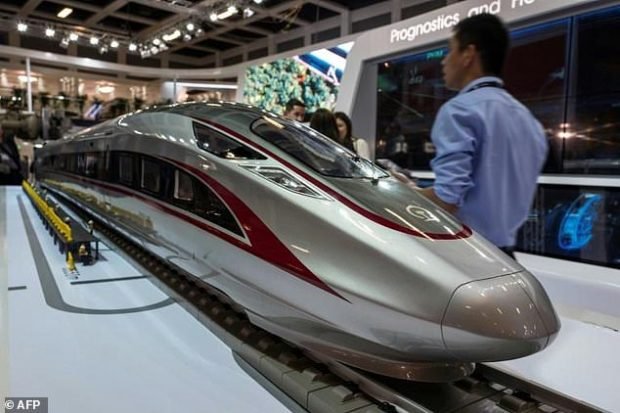New enemy air defense systems mean ONLY stealthy aircraft are viable
Russia has recently decided to sell the state-of-the-art S-300PMU2 air defense systems (commonly known as SAMs, though the term SAM applies only to the missiles themselves) to the Syrian government to prevent any foreign intervention against the Assad regime, and to sell the equally capable S-300VM system to Iran. Earlier, it agreed to sell even more advanced and more capable S-400 (SA-21) air defense systems to China, which already has numerous S-300 and HQ-9 brigades. What does this mean for the US military and allied militaries (such as the IDF)?
It means that all nonstealthy Western aircraft (including the F-15, F-16, F/A-18, EA-18, EA-6, the Typhoon, the Rafale, the Gripen, the B-52 and the B-1) are by now completely and utterly obsolete, useless, impotent, and irrelevant. The US military might as well scrap all of its nonstealthy aircraft and save itself the expense of operating them. And this vulnerability cannot be overcome, or even ameliorated, with upgrades. The same applies to all nonstealthy cruise missiles.
This is because, quite simply, all of these aircraft and cruise missiles would be detected and shot down quite easily from a very large distance by the forementioned Russian and Chinese air defense systems, were they to ever venture into airspace protected by such systems (or by fighters like the PAKFA, the J-20, and the J-31).
Here’s how it works.
Like all other weapons, air defense systems need just two things to shoot aircraft down: the ability to detect and track their targets and the ability to shoot them down from a sufficient distance, before the enemy aircraft makes it to a point from which it could release its weapons (bombs or missiles) or jam the system.
These Russian and Chinese air defense systems – the S-300, S-400, and HQ-9, plus the HHQ-9 and HQ-16 onboard Chinese ships – meet both requirements. They can detect nonstealthy aircraft, even those flying at low altitudes, and shoot them down from a very long distance. That distance, in the S-300’s and HQ-9’s case, is 200 kilometers. The S-400’s maximum range is double that, at 400 kms.
This means that, once S-300 systems are delivered to Syria, Damascus will be able to declare and enforce a no-fly zone over almost all of Israel and shoot down IAF aircraft while they take off from their bases.
This also means that China can, even today, declare and enforce (if it wants to) a no-fly zone over half of Taiwan – the western and northern half, to be precise. Once S-400 systems are delivered to China (which is on track to happen in 2017 or sometime thereafter), Beijing can enforce a no-fly-zone over ALL of Taiwan (shooting down ROCAF aircraft when they try to take off), as well as ALL of Okinawa (where the USAF’s 18th Wing and USMC aviation units are based) and the disputed Senkaku Islands – because they are so close to China.
The F-15, F-16, F/A-18, EA-18, EA-6, B-52, B-1, and the Eurocanards have such large radar signatures (i.e. are so easibly visible on radar screens from such a long distance) that they would be detected and shot down at a large distance from their planned weapon release point – to which they would never make it – or to the point where jammer aircraft like the EA-18 and EA-6 could effectively jam enemy radars. This renders the EA-18 and the EA-6 completely useless for jamming, as they would never be allowed to get close enough to jam enemy radars.
This is because none of these aircraft were ever designed to be stealthy, and no serious attempt was made with any of them to reduce their radar signatures. All of them except the EA-18 were designed during the 1950s, 1960s and 1970s, before there was any stealth technology. Today, they are hopelessly obsolete, and thus utterly useless, impotent, and irrelevant.
For jammer aircraft such as the EA-18 and EA-6, the situation is doubly worse, because modern SAM system are much more jam resistant due to their high-power aperture. They also use ploys such as ‘frequency hopping’ from pulse to pulse. The jammer may respond to the last pulse, but does not know the frequency of the next one, so misses. This is built into all modern air-to-air radars as well. And don’t forget that all modern SAM missiles have ‘home-on-jam’. It works like this: “Light up that jammer and come in, sucker!”
Thus, all nonstealthy aircraft, including the EA-18 and the EA-6, have ZERO chance of surviving in airspace protected by the forementioned advanced Russian and Chinese air defense systems. This means that developing the Next Generation Bomber and resuming F-22 production is a NECESSITY, not a luxury, let alone “waste”, contrary to the utterly false claims of leftist, anti-defense groups such as TCS, POGO, CATO, the ACA, and others.
The ONLY Western (not just American, but WESTERN) aircraft capable of surviving in such airspace are the B-2 bomber, the F-22 fighter, and the F-35 strike jet. The Next Generation Bomber and the UCLASS carrier-capable drone are at the beginning stages of their development.
And the F-35 actually has slim chances of survival, because unlike the B-2 and the F-22, it is not very stealthy, and not from all aspects, and not in all radar bands. It is stealthy mainly from the front and up, and primarily in the X and S bands – much less so in lower radar bands or at lower frequencies.
This is not surprising, given that the F-35 was designed to be a battlefield interdictor, i.e. a tank hunter operating in airspace already sanitized by the B-2 and the F-22 – not as a Suppression of Enemy Air Defenses aircraft. It was (and is being) designed for a world in which the S-300, S-400, PAKFA, J-20, J-31, HQ-9, and HQ-16 did not exist.
Now that these systems all exist – and that the S-500 and HQ-12 air defense systems, even more advanced than those described above – are in development, the F-35 is obsolete before it has even entered service, although it is still much more modern and more capable than all of the legacy aircraft listed above.
The only solution for the US is to cancel the F-35 program, resume F-22 production, develop Marine and Naval versions of it, make the F-22 available to select allies, and speed up the development of the Next Gen Bomber and the UCLASS. Only these aircraft can survive and prevail in airspace defended by modern air defense systems such as the S-300, S-400, HQ-9, or HQ-16 – and looking to the future, only these systems will be able to survive in airspace defended by the S-500, HQ-12, PAKFA, J-20, or J-31.





